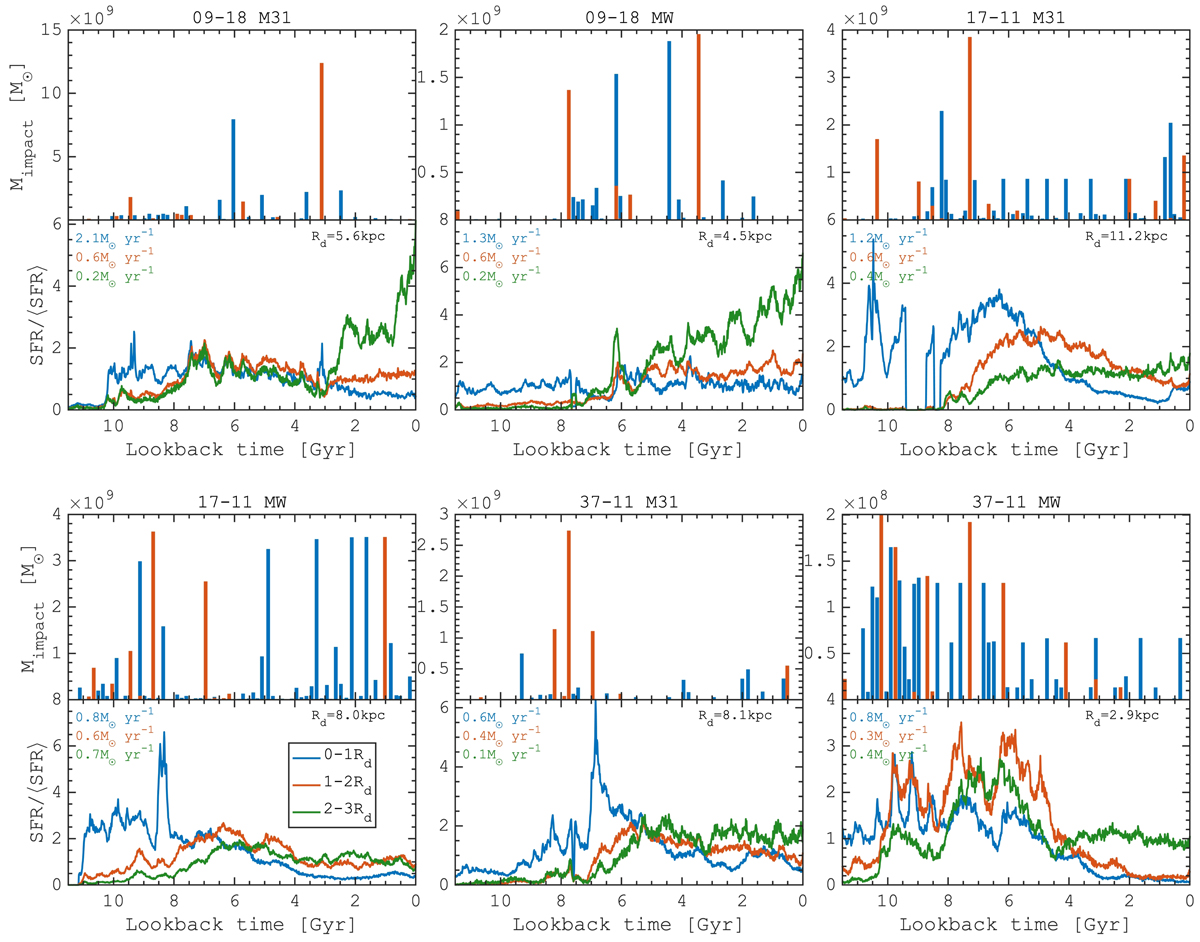Fig. 6.

Download original image
Impact of the most significant mergers and close pericentric passages of massive satellites on the star formation history of M 31 and MW HESTIA galaxies. For each galaxy, in the top panels we highlight the time of the close passages (< 10 kpc from the host) and the stellar mass (Mimpact at the time of the close passage) of the dwarf galaxies which either merged (red) or survived at z = 0 (blue). The bottom panels show the star formation rate as a function of the lookback time for three galactocentric regions: (0 − 1) Rd (blue), (1 − 2) Rd (red), and (2 − 3) Rd (green), where Rd is the disc scale length at z = 0. The star formation histories at different galactocentric radii are scaled by the mean star formation rate whose value is mentioned in each panel with the same colour. The star formation histories of the HESTIA galaxies show a number of short timescale peaks in addition to the early rise and slow decrease of the star formation rate. In most cases, the peaks of the star formation correlate with either massive mergers or with the pericentric passages of massive dwarf galaxies. However, not all of the close encounters correlate with the star formation bursts inside the host galaxies.
Current usage metrics show cumulative count of Article Views (full-text article views including HTML views, PDF and ePub downloads, according to the available data) and Abstracts Views on Vision4Press platform.
Data correspond to usage on the plateform after 2015. The current usage metrics is available 48-96 hours after online publication and is updated daily on week days.
Initial download of the metrics may take a while.


